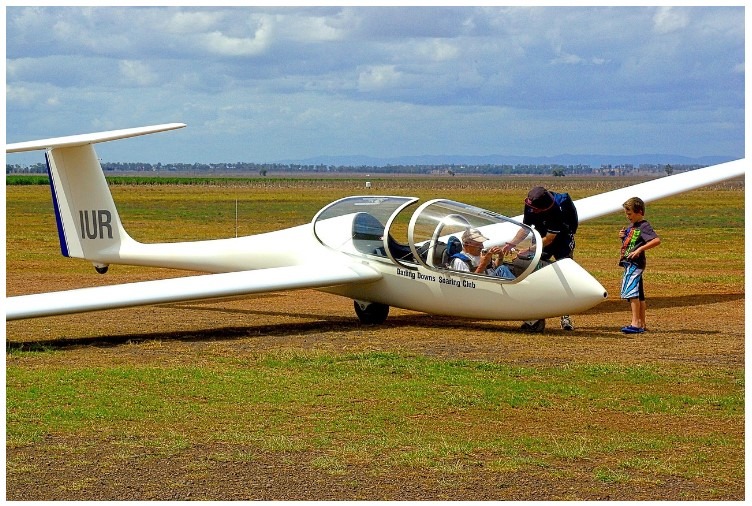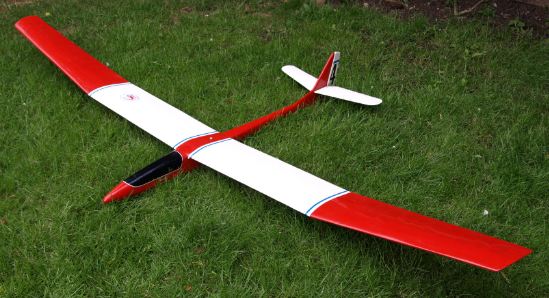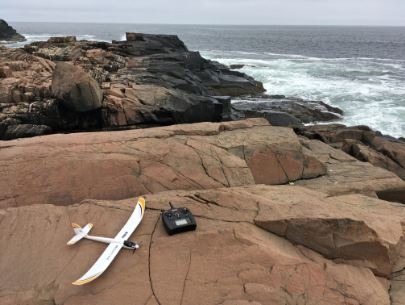The world of remote-controlled hobbies is full to the brim with a ton of fascinating and extremely fun activities you can sink thousands of hours in to. While some hobbyists prefer the much slower paced and methodical functioning of a model train railroad network, others prefer the action-packed adrenaline that comes with racing around super-fast diesel-powered remote-controlled cars.
And then there are the hobbyists that prefer the freedoms granted to them by the wide, open skies above them. You’ve got people who like to spend their evenings flying around remote-controlled helicopters of varying complexity when it comes to their flight controls, people who zip around above crowds with a quadcopter drone and shoot videos of their city or town, and people who fly planes high up close to the clouds while preforming loop de loops and barrel rolls. And then there is the calming and yet some times nerve-wracking hobby of guiding a glider that soars above steep cliffs and mountains.
The Basics of Glider Slope Soaring
So, what exactly comes packaged with the hobby of glider slope soaring? As the name implies, the main focus in this hobby is to take control of a glider plane and help it to navigate the wind currents and stay airborne. Depending on the type of hill or mountain you take off from, as well as the current force and direction of the wind, the experience can be a calming and pleasant way to pass the time or a fight for survival as you battle against almost insurmountable odds to keep your glider in one piece.
Just because it is called a glider, does not mean that the owner of that glider has zero control over it. Exactly like full-sized glider planes, you get to control some aspects of your glider’s flight. For one, you get to control the basic aileron functioning of that glider, allowing you to bank to make turns. You also get to control the tail flaps, normally known as the plane’s elevator, giving you control over the pitch of the glider. And lastly, you get to control the rudder of the glider as well, which allows you to make slight turns without banking the glider wherever needed.
How do Remote-Controlled Gliders Fly?
When asking how these glider planes fly when there appears to be no engine or other mechanism powering its thrust, it’s important to realize that the name of the machine is very literal. Gliders do not fly. Though they might give the illusion of flight, especially due to the limited control they provide the user, they in fact only make use of wind currents and gravity to glide across the air.
Gliders can only be launched from the edge of a cliff or a hill or mountain. This edge should be steep, though if its too steep it won’t work at all, so a 30-degree angle can usually suffice. The base of the cliff may be covered in a few obstructions for the wind, like rocks and trees, but if the base is far away from the edge it should pose little problems. If the area close to the edge of the cliff isn’t free of obstructions however, the launch is destined to be disastrous and relocation for takeoff is highly encouraged.
If the area around the base of the cliff is full of trees or buildings that block the drafts of wind moving towards the cliff, the launch will be sub optimal at best. Flat areas with little to no interference in the wind’s path are preferred for perfect launches. With all of that covered, let’s talk about what actually powers a glider’s flight and motion.
With cliffs and other steep mountainside areas, the wind blowing towards the drop is pushed upwards. This almost continuous updraft of wind reaches the edge from where the glider is to be launched, and then continues upward for a little bit more before losing concentration towards the sky. This current of wind is what the glider is thrown in to, and is the sole phenomena that helps the glider take lift and ascend.
A Glider’s Takeoff in More Detail
Gliders, when first being thrown in to the upward draft of wind to achieve liftoff, need to be angled properly and thrown with adequate momentum if they are expected to successfully achieve flight. For proper angling, make sure to launch the glider horizontal to the horizon. Some people prefer launching their gliders with the nose of the glider pointing just a tiny bit towards the ground. However, launching a glider with the nose pitched upward will most likely lead to a failed launch and subsequent crash.
The glider also needs to be pushed with enough strength so it doesn’t just flop towards the ground as soon as it leaves your hands. Do not overdo the push, lest it power through the draft and not get any thrust under its wings. And putting too much effort in to throwing the glider might also mess with the angle and it might just nosedive straight in to the ground. It might take a few practice launches before you really get the hang of how to properly launch a glider.
There are two methods to launching a remote-controlled glider, because alongside the glider itself you also have to use the remote control. You can either launch the glider with one hand and hold the remote control in the other with your thumb and fingers ready on the controls, or you can attach a wrist or neck strap to your remote control and reach for it instantly after having thrown the glider using both hands. Again, a few initial launches will clear your mind on which method you prefer more.
Another thing to remember is to not stand directly in front of the edge of the cliff. Not only is that dangerous because you could fall off, it also isn’t optimal for a perfect launch as the thrown glider would power through the strongest bit of the upward draft of wind and then try to glide on the weaker bit of the wind current. If your glider catches an optimal amount of wind, it will take off and gain altitude incredibly fast. In fact, some newcomers to glider slope soaring are quite taken aback by the quick ascent a glider makes after a proper takeoff.
What Do You Do After a Glider Takes Off?
Now of course, this hobby wouldn’t nearly be half as fun as it is if the most exciting part of the whole activity was launching the glider. The three aspects of control that you’re given over the glider plane are there not just for assistance during the initial takeoff phase, but also so that once proper altitude has been accomplished, the user can then guide the glider around the air to wherever they wish, and maybe even execute some stunts.
What’s important to remember after a glider takes off is that it doesn’t just not function like a normal remote-controlled plane during takeoff, but at every moment of its flight. Even after achieving a successful liftoff, there is no inherent engine or other source of power that will keep the glider flying in a straight line. This is one aspect of this hobby that is so endearing to old-timers; the fact that you have to constantly manage the glider so it doesn’t spiral into an uncontrollable descent that leads to a devastating crash.
You’ll be continuously managing the velocity of the glider, and you will have to do that by repeatedly pitching it so that it catches another draft under its wings and gains some more velocity and altitude. During these periods of proper gliding, the user is free to just glide wherever they wish or even carry out a barrel roll or a loop de loop if they feel confident enough in their abilities. You will also have to keep the glider away from the flat bit of ground that you’re standing on, as it will lose the wind current there and fall towards the ground.
Conclusion
Hopefully now you’re much more aware of the fascinating hobby of soaring remote-controlled gliders over slopes. Of course, this only covered the basics of the whole hobby and the main aspects of flying remote-controlled gliders. If you’re now interested in actually giving this hobby a go and are looking for further tips a newcomer could use, like how to actually land a glider back on flat ground, be sure to check out our post on tips for getting started with remote-controlled gliders. If you’re looking for something else to read while passing the time, we’ve got a post similar to this that briefly discusses sailplanes.



